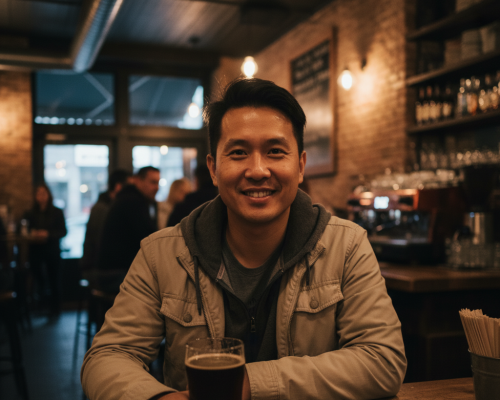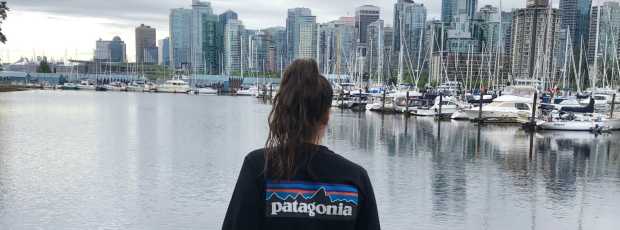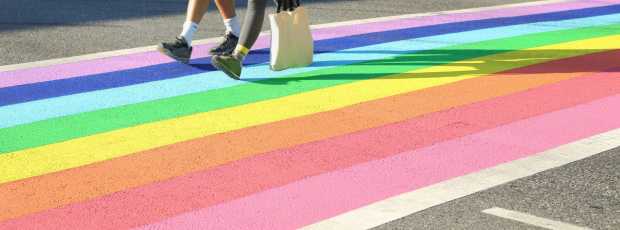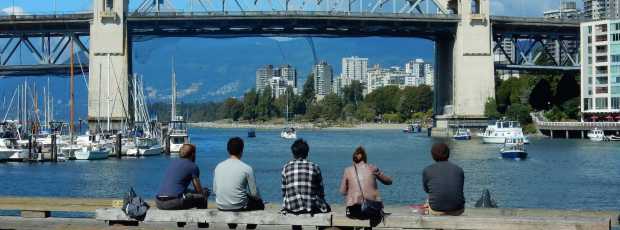This was the best way to start my trip. Erika was so kind and accommodating. We got to see the best parts of Vancouver, and she shared so much knowledge about the buildings and the neighborhoods.Katherine, Vancouver, 2025
Table Of Contents
- What Makes Something a Hidden Gem in Vancouver?
- Everyday Hidden Gems Most Visitors Walk Past
- Cultural and Creative Gems Locals Actually Use
- Food and Drink Gems That Feed Locals
- Neighborhood and Social Gems Where Vancouver Lives
- Nature and Outdoor Gems Beyond the Tourist Trails
- What's Overrated and What to Do Instead
- Practical Tips for Finding Vancouver's Quiet Corners
- Frequently Asked Questions
- Final Thoughts on Hidden Gems in Vancouver

Morning fog rolling through old-growth trees at Lighthouse Park
I'm Lucas Wong and I've hosted enough City Unscripted experiences to know what visitors expect when they ask about Vancouver hidden gems. They want secrets. But the real discovery isn't finding some unmarked speakeasy or offshore island. It's learning to see the texture already here. The way light hits a Strathcona alley at 8 AM. The smell of wet cedar mixed with coffee from a garage roastery. The heron standing still at Jericho Beach while joggers and dogs pass without looking.
This isn't a list of the Top 10 attractions you missed. It's a map of where Vancouver slows down enough to let you in. You discover these places by accident, then return on purpose. If you want a bigger canvas beyond the quiet corners, this is a genuine guide to awesome Vancouver experiences.
What Makes Something a Hidden Gem in Vancouver?
Before we start, let's be honest about what doesn't count. Granville Island on a Saturday afternoon isn't hidden. Neither is Capilano Suspension Bridge, no matter how many Instagram accounts tag it as "off the beaten path." A hidden gem in British Columbia means locals still outnumber tourists. It means you might park your car and see someone walking their dog, not posing for photos.
I sketch buildings for a living, so I notice when a place has bones. But even I am sometimes overwhelmed with surprise at things to do in Vancouver that I've previously missed. Real hidden gems have history that predates the branding. They serve a function beyond being photogenic. And most importantly, they're woven into the everyday rhythm of the neighborhood around them.
Experiences Created by Locals, Just for You
See the city through the eyes of the people who call it home.

Colorful mural covering garage door in Strathcona alley
Everyday Hidden Gems Most Visitors Walk Past
The best finds hide in plain sight, woven into the daily patterns locals follow without thinking.
Strathcona Laneways
I cut through Strathcona lanes almost daily. Not because they're faster, but because they smell like rain and wood smoke, and the murals change every few months. This is one of Vancouver's oldest neighborhoods, wedged between Chinatown and the industrial waterfront. The main streets have their charm, but the alleys have the soul.
You'll find community gardens tucked behind century-old houses, garage studios where printmakers and woodworkers leave their doors open on warm days, and hand-painted signs directing you to artist co-ops. There's no parking lot to aim for. You just walk, turn down a lane that looks interesting, and see what you find.
I recommend checking the route between Prior Street and East Hastings during daylight. The neighborhood is safe, but late at night the energy shifts. Bring a camera if you want, but be respectful. People live and work here.
Mount Pleasant Micro-Roasteries
Every neighborhood in Vancouver has its coffee ritual. In Mount Pleasant, that means garages turned into quality roasteries where you can watch beans tumble and smell them before they hit the grinder. It's an easy hop from downtown Vancouver, but the mood shifts the moment you hit Main Street. I'm thinking of places like Prototype and Matchstick, though there are half a dozen others within a few blocks.
What I love about these spots is the lack of performance. You order at a window, they hand you a cup, and you stand outside on the sidewalk or sit on a bench someone dragged over from a nearby alley. It's not designed for lingering. It's designed for locals grabbing a flat white before work or between errands.
The cafe culture here feels more honest than the curated spaces downtown. Less marble, more concrete. Less branding, more coffee that actually tastes like something. Come in the morning if you want to see the neighborhood waking up.

Neighborhood coffee window at a Mount Pleasant Cafe
Granville Island Before the Crowds
Yes, Granville Island is famous. But if you go at 7 AM on a weekday, it's a different place entirely. I walk the side piers before the restaurants open, when fishermen are still cleaning boats and seagulls are the only real noise. The fog sits low over False Creek. You can hear the water slapping against the docks.
This is when I sketch the industrial bones of the island, the cranes and old silos that remind you this was a working shipyard before it became an artisan market. By 10 AM the tour buses arrive and the magic dissolves. But in those early hours, you can feel what locals loved before anyone called it an attraction.
Park at the east end if you're driving, or take the small ferry from Olympic Village. Bring a jacket. The wind off the water is sharp even in summer.

Quiet docks at Granville Island in early morning fog

Rio Theatre's iconic neon sign glowing against evening sky
Cultural and Creative Gems Locals Actually Use
Art and culture in Vancouver happen in working studios and neighborhood theaters, not just polished galleries.
Rio Theatre
I'll be direct. Most of Vancouver's independent cinemas closed years ago. The Rio survived because the neighborhood refused to let it die. Located on Commercial Drive, this single-screen theater shows cult films, local premieres, and the kind of midnight movies that draw people in pajamas and costumes. Costumes join the line on cult-movie nights. It's a cult mainstay in British Columbia film culture.
The building itself is worth seeing, a 1938 art deco gem with a neon sign that glows pink and blue after dark. Inside, the seats are worn and the floor is sticky, and somehow that's part of the appeal. It feels like a real cinema, not a corporate multiplex.
Check their schedule online. Show times vary, and some screenings sell out. Tickets are cheap, usually under $15. There's a small concession stand, but I usually grab food on the Drive before heading in. No flash photography during screenings. The regulars will let you know.
James Black Gallery and Eastside Culture Crawl
If you're interested in Vancouver's art scene beyond the tourist galleries, start with the James Black Gallery near Strathcona. It's a small space, easy to miss, but it represents local artists who actually work in the city rather than fly in for shows.
Better yet, visit during the Eastside Culture Crawl in November. This is when artist studios join the open-door weekend across East Vancouver. Studios join forces for late hours. You can walk from studio to studio, watch printmakers pull editions, talk to sculptors about their process, and buy work directly without gallery markup.
I've hosted City Unscripted guests during the Crawl, and it's one of the few times visitors get to see how art is actually made in this city. No white cube galleries, just working spaces that smell like turpentine and metal dust. Bring cash if you're planning to buy. Many artists prefer it.
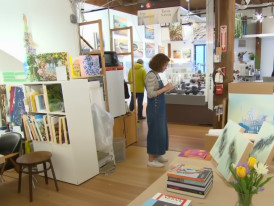
Visitors enjoying artist studios during the Eastside Culture Crawl
Vancouver Police Museum
Welcome to the old morgue building. Yes, literally. The Vancouver Police Museum sits in what used to be the city's autopsy lab and jail cells, and they haven't tried to soften the history. You'll see confiscated weapons, crime scene photos from the 1920s, and artifacts from cases that shaped British Columbia's legal system.
It's not a cheerful visit, but it's honest. Vancouver has a polished reputation, but every city has darker stories. This museum tells them without sensationalizing. The building itself is beautiful in a grim way, with thick walls and small windows designed to keep secrets in.
Located near Main Street, close to some excellent restaurants if you need to decompress afterward. Open most days, but check hours before you go. Admission is around $12. Not recommended for young children.

Exterior of the Vancouver Police Museum
Salmon n' Bannock's menu changes seasonally, but the commitment to Indigenous ingredients and stories stays constant.

Rustic fish shack with lineup of customers
Food and Drink Gems That Feed Locals
My city's best meals come from places locals rely on, not restaurants designed for tourists. And when you know what to eat in Vancouver, you'll have an even better time here.
Go Fish
This is a shack on a dock at the edge of Granville Island. There's no indoor seating, just a few picnic benches that face False Creek. The menu is simple: fish and chips, fish tacos, salmon sandwich. Everything comes from local waters, often caught that morning.
I eat here more than I should admit. The lineup can stretch 20 people deep on sunny days, but it moves fast. Order, grab your food in a cardboard boat, find a spot on the dock, and watch seagulls circle overhead. Sometimes seals surface near the pilings. It's the kind of meal you eat with your hands while standing up.
Cash and cards accepted. Open daily, weather dependent. Get there before Noon if you want to avoid the peak lunch crowd. This is what Vancouver tastes like when you strip away the restaurant markup and tourist menus.
Salmon n' Bannock
This Indigenous-owned bistro in Fairview serves food you won't find anywhere else in Vancouver. Fair warning: weekend brunch here books out days ahead. Bannock, bison, wild salmon prepared with traditional techniques and contemporary presentation. The menu changes seasonally, but the commitment to Indigenous ingredients and stories stays constant.
I bring guests here when they want to understand the deeper food culture of British Columbia. This isn't fusion or trend chasing. It's food that connects directly to the land and the people who've lived here for thousands of years before the city existed.
Reservations recommended for dinner. Prices range from $25 to $40 per person. The restaurant is small, maybe 40 seats, so it fills up on weekends. Try the bannock if nothing else. It's fried bread, simple and perfect.

Salmon n' Bannock Bistro
Alibi Room and the Brewery Trail
Gastown has plenty of tourist traps pretending to be local pubs. Alibi Room isn't one of them. This is where Vancouver's craft beer community actually drinks. The tap list rotates constantly, featuring breweries from across British Columbia you've probably never heard of. Small producers from across British Columbia get shelf space here. The staff knows their beer and will talk you through the options without the usual craft beer snobbery.
If you're serious about beer, spend an afternoon walking the False Creek brewery trail. Start at Alibi Room, then work your way through Mount Pleasant where half a dozen breweries operate within walking distance. Bring a friend who doesn't mind slow travel. This isn't a pub crawl. It's a tasting tour that takes all afternoon.
Most breweries open around Noon. Flights cost $10 to $15. Food options vary. Some have kitchens, others let you bring takeout. Check individual brewery hours before planning your route.

Beer tasting at the Alibi Room
Hungry to Taste Vancouver Like a Local?
From tucked-away eateries to lively markets, discover flavors worth your time.

Rainbow crosswalk on Davie Street at night with neon signs
Neighborhood and Social Gems Where Vancouver Lives
The character of a city shows up in its neighborhoods after dark and in the spaces where communities gather.
Davie Village After Dark
Davie Village is Vancouver's LGBTQ+ heart, a stretch of rainbow crosswalks and neon signs between downtown and English Bay. During the day it's busy but not remarkable. After dark, the neighborhood comes alive with energy you don't find in the polished districts nearby. Crowds join the sidewalk conversation by 10 PM.
I'm thinking specifically of places like the Shameful Tiki Room, a 1960s-style tiki bar that commits fully to the kitsch. Pufferfish lamps, surf rock on the speakers, cocktails served in ceramic skulls. It's absurd and wonderful, the kind of place where you can show up alone and leave having made friends with the bartender and three strangers. The interiors commit fully to the 1960s tiki aesthetic.
This neighborhood is safe and welcoming. Walk the strip on a Friday or Saturday evening. Stop where the music or crowd pulls you in. Davie Village doesn't require planning. It requires showing up and letting the Vancouver night unfold.
Commercial Drive's Immigrant Cafés
The Drive, as locals call it, has been Vancouver's multicultural corridor for decades. Italian delis sit next to Ethiopian restaurants. Portuguese bakeries share blocks with Vietnamese cafés. The neighborhood has gentrified some, but it still holds onto its working-class immigrant roots.
I come here for morning coffee at one of the family-run cafés where the espresso is strong and the pastries are whatever got baked that morning. No menus designed for Instagram. No barista competitions. Just coffee, a counter, and regulars who've been coming for 20 years.
Walk the full length from Venables to Broadway if you have time. Stop where something catches your attention. The best spots don't have signs in English. That's how you know they're real.

Locals standing at an espresso bar on Commercial Drive
Railtown Artist Workshops
East of Gastown, Railtown is where Vancouver makes things. Woodworkers, metalworkers, designers, and small manufacturers rent warehouse spaces in buildings that used to house rail freight operations. It's industrial, slightly gritty, and more interesting than any curated maker market.
I have studio space here, so I'm biased. But when I host City Unscripted experiences focused on architecture and design, this is where I bring people who want to see the working side of the city. You can't just wander into private studios, but many have small storefronts or open hours. Check individual workshop schedules.
Best visited on weekdays when things are actually happening. Parking is easy. The area is safe during business hours, quieter at night.

Mixed media workshop in Railtown, making cast iron jewellery
Wish you had a local friend in Vancouver?
Our locals share their city with you the way they live it: flexible, real, and unscripted.
See how it works
Bloedel Conservatory's geometric glass dome glowing at sunset
Nature and Outdoor Gems Beyond the Tourist Trails
Vancouver sits between ocean and mountains, and the best natural spaces feel untouched by the tour industry.
Lighthouse Park Old-Growth Forest
This is my answer when visitors ask about Capilano Suspension Bridge. Lighthouse Park in West Vancouver offers the same ancient rainforest without the entrance fee or tour groups. Five-hundred-year-old trees, marked trails, rocky shoreline, and a working lighthouse that's been here since 1912.
The best views are along the West Beach Trail. Wear proper shoes; parts of West Beach Trail turn into a narrow path over roots and slick rock. Walk to Jack Pine Point for sunset if the weather cooperates. On weekends the parking lot fills by 10 AM, so arrive early or take bus 250 from downtown Vancouver. The stop is West Beach Marine Drive at Beacon Lane.
Free admission. Trails range from easy loops to more challenging scrambles. Bring water and a jacket. The forest stays cool even in summer.
Lynn Canyon Free Suspension Bridge
Everyone knows Capilano Suspension Bridge. Almost no one knows Lynn Canyon does the same thing for free. The bridge here is shorter but the experience is equally dramatic, suspended over a green canyon with moss-covered rocks and rushing water below.
Located in North Vancouver on Indigenous Territory, about 20-35 minutes from downtown. The park includes several trails. The most popular are Twin Falls Loop to see waterfalls and Thirty Foot Pool Trail to reach a swimming hole that locals use in summer. The bridge itself was built when the park opened over a century ago.
Free parking from November through February. Paid parking rest of year but still cheaper than Capilano admission. Environmental Center on site with education programs. Arrive early on sunny weekends. The trails get crowded by Noon.

Good times at the Lynn Canyon Suspension Bridge
VanDusen Garden Elizabethan Maze
I'll admit this one isn't exactly hidden. VanDusen Botanical Garden is well-known. But most visitors stick to the main paths and miss the hedge maze tucked into the northwest corner. It's one of only six Elizabethan-style mazes in North America, made from 3,000 pyramidal cedar trees planted in 1981.
I love this maze because it's genuinely disorienting. You can hear people on the other side of the hedge but can't figure out how to reach them. There's an observation terrace where friends can watch you struggle, which adds to the fun. The gardens around it cover 55 acres with plants from around the world.
Admission is around $10 for adults. The gardens are open every day except Christmas. Accessible paths throughout. Best visited in spring when everything is blooming, though the maze works year-round.

At the cedar hedge maze at VanDusen Garden
Jericho Beach and the Heron Spot
Every beach in Vancouver has its regulars. Jericho Beach belongs to photographers, dog runners, and water sports people.
It sits in the middle of the western neighborhoods, easy to reach from Kitsilano or Point Grey. It's less crowded than Kitsilano, with better views of the bay, downtown skyline, and North Shore mountains. Skylines, barges, and the North Shore mountains show off the best of British Columbia. I come here at dusk to sketch when the light turns gold and herons wade in the shallows.
The beach has free tennis courts, rugby fields, and soccer pitches. There's a center for yacht and paddleboard rentals if you're into that. But mostly it's just a wide sandy beach where locals bring dogs and picnics and spend hours doing nothing in particular.
Parking fills up on summer weekends. Consider biking or taking the bus. The beach is long enough that even when it's busy you can find quiet corners. Watch for herons near the western end. They're patient birds. You should be too.

Nighttime skyline of Vancouver from Jericho Beach
Bloedel Conservatory's Tropical Dome
This glass bubble sits on top of the highest point in Vancouver at Queen Elizabeth Park. Built in 1969, it houses three climate zones under one triodetic dome: tropical rainforest, subtropical rainforest, and desert. Over 500 plant species and 100 free-flying birds live inside. It's a winter refuge that's pure British Columbia contrast.
Walking into Bloedel in January when it's raining outside is like stepping into another hemisphere. Humid air, bright colors, birds calling from the canopy. Coffee trees and fig trees grow next to exotic ferns. Parrots and finches fly overhead. It's a small space but dense with life.
Admission is $9 for adults. The conservatory has had funding issues over the years, but it keeps operating thanks to community support. Accessible entrance and paths throughout. Plan 30 to 45 minutes for a visit. Combine it with a walk around Queen Elizabeth Park for city views.
Feel Part of Vancouver
Locals share their city as they live it, so even a few hours can feel like you truly belong.
Quiet viewpoint at Burnaby Mountain
What's Overrated and What to Do Instead
Knowing what to skip matters as much as knowing what to seek.
Let's be clear about the tourist traps. Here's how the so-called Vancouver hidden gems stack up against the famous picks. Capilano Suspension Bridge charges $60 and delivers the same experience you get free at Lynn Canyon. The difference is marketing and parking lots full of tour buses. Granville Island restaurants serve mediocre food at premium prices while Go Fish sells better fish for half the cost 200 meters away.
Downtown restaurants cater to convention crowds and cruise ship passengers. Mount Pleasant eateries serve locals and price accordingly. Grouse Mountain has spectacular views but requires a gondola ticket and crowds. Burnaby Mountain Park offers similar panoramas with nothing but dog walkers and trail runners. I always tell friends that this is the perfect place for a Vancouver day trip to remember.
I'm not saying avoid famous spots entirely. Just understand what you're paying for. And maybe save your money for places locals actually use. Vancouver's real beauty shows up in the margins, the places designed for daily use rather than once-in-a-lifetime visits. That's where I spend my time. That's where the city lives.

Person consulting transit map while standing at Vancouver bus stop in rain
Practical Tips for Finding Vancouver's Quiet Corners
Transit in downtown Vancouver works well; SkyTrain gets you to Richmond, Burnaby, and Surrey. Buses cover the rest. Get a day pass if you're planning multiple trips. Most hidden gems are walkable once you reach the right Vancouver neighborhoods.
Parking fills early at popular parks like Lighthouse Park and Jericho Beach. Weekday mornings are your friend. Bloedel Conservatory and VanDusen Garden are accessible for wheelchairs and strollers. Most artist studios and cafés are not. Check ahead if accessibility matters.
Weather in British Columbia is temperamental. Spring means spot prawns and blossoms. Summer brings beach weather and the Richmond Night Market. Autumn delivers the best colors and fewer crowds. Winter is wet but peaceful, with fog that makes everything photogenic.
Etiquette matters in residential neighborhoods. Don't block driveways in Strathcona. Don't use flash photography at Rio Theatre. Don't set up tripods in community gardens. Vancouver is friendly to visitors who respect that locals live and work in the places you're exploring.
Smaller venues sometimes post last-minute hours on Facebook; check their site for the schedule.
Imagine Experiencing Vancouver for Real
A local can show you the vibe, flavors, and hidden gems up close.
Frequently Asked Questions
1. What Is the Best Hidden Gem in Vancouver?
There's no single best spot. Lighthouse Park if you want old-growth forest. Lynn Canyon if you want a free suspension bridge. Go Fish if you're hungry. The best hidden gem is whichever place matches what you're looking for that day.
2. Are Vancouver's Parks Open Year-Round?
Yes. Most parks in British Columbia stay open all year. Lighthouse Park, Lynn Canyon, Jericho Beach, and Queen Elizabeth Park never close. Hours for facilities like the Bloedel Conservatory vary, but the outdoor spaces are always accessible.
3. What Is the Free Alternative to Capilano Bridge?
Lynn Canyon Suspension Bridge in North Vancouver. Same old-growth forest, same suspension bridge experience, no admission fee. The bridge is shorter than Capilano, but the trails and waterfalls make up for it.
4. Where Do Locals Eat in Vancouver?
Mount Pleasant for indie restaurants and breweries. Commercial Drive for immigrant-run cafés and delis. Richmond for authentic dim sum and the night market in summer. Avoid the waterfront tourist restaurants unless you enjoy paying double for mediocre food.
5. Is Granville Island Worth Visiting?
Yes, but go early. Before 9 AM on weekdays, Granville Island feels like a working waterfront with artisan shops and real food vendors. After 10 AM it becomes a tourist market with lineups and crowds. Skip the sit-down restaurants and head to Go Fish instead.
6. What Are Some Vancouver Hidden Gems Near Transit?
Mount Pleasant is a 10-minute SkyTrain ride from downtown. Get off at Main Street-Science World and walk up Main. Early-morning Granville Island is reachable by small ferry from Olympic Village station. Commercial Drive sits on multiple bus lines from downtown.
7. What Should I See in Downtown Vancouver?
The Marine Building is the best example of art deco architecture in the city. The downtown waterfront has good walking paths. But honestly, the interesting neighborhoods are outside downtown. Gastown, Mount Pleasant, and Commercial Drive offer more texture and local life.
8. How Do I Get to Richmond Night Market?
Take the SkyTrain to Richmond-Brighouse station, then bus 403 or a short taxi ride. The market runs from late April through October, opening at 7 PM on Fridays and weekends. Bring cash. Most vendors don't take cards. Arrive early to beat the crowds.
9. Where Can I See Art in Vancouver?
James Black Gallery near Strathcona. The Eastside Culture Crawl in November when artist studios open to the public. Contemporary Art Gallery downtown for rotating exhibits. Railtown for working studios, though most aren't open to drop-ins.
10. Is Vancouver Safe to Explore at Night?
Most neighborhoods are safe. Davie Village, Gastown, Mount Pleasant, and Commercial Drive have active nightlife. Avoid deep East Hastings after dark. Use common sense. If a street feels empty and uncomfortable, walk somewhere else.
11. What's the Best Time to Visit Vancouver?
Spring for spot prawns and cherry blossoms. Summer for beaches and outdoor festivals. Autumn for fewer crowds and fall colors. Winter for cheap hotel rates and atmospheric fog. There's no wrong season if you dress for rain.
12. Can I Walk to Most Hidden Gems in Vancouver?
Within neighborhoods, yes. Between neighborhoods, no. Vancouver sprawls. Use transit or drive. Bike infrastructure is excellent if you're comfortable cycling in traffic. Most locals walk or bike short distances, drive or take the bus for longer trips.
13. Do I Need a Car to See Vancouver's Hidden Gems?
Not for downtown, Gastown, or Mount Pleasant. Yes for Lighthouse Park, Lynn Canyon, and Jericho Beach unless you're comfortable with longer bus rides. Car rentals are available, but parking costs add up fast. Transit covers most of the city.
14. Where Can I See Indigenous Culture in Vancouver?
Salmon n' Bannock for contemporary Indigenous food. Museum of Anthropology at UBC for historical artifacts and art. Lynn Canyon is on Indigenous Territory. Many parks and neighborhoods acknowledge Coast Salish heritage. Reservations in advance recommended.
15. Are There Beautiful Gardens in Vancouver?
VanDusen Garden has 55 acres including the Elizabethan maze. Bloedel Conservatory brings tropical plants to a glass dome. Queen Elizabeth Park offers hilltop views. Strathcona has community gardens tucked into lanes. Vancouver has gardens at every scale.
16. What Makes a Place a Hidden Gem in Vancouver?
Locals outnumber tourists. The place serves a real function beyond being photogenic. It's woven into neighborhood life. No tour bus parking lot. No Instagram wall. Just a spot where the city slows down enough to breathe.

Sunset view over False Creek with person
Final Thoughts on Hidden Gems in Vancouver
I've lived in Vancouver long enough to watch neighborhoods change. Coffee shops become cocktail bars. Artist studios get replaced by condo towers. The hidden gems from ten years ago show up in guidebooks today. That's city life. Things evolve.
But the practice of noticing doesn't change. The best way to find hidden gems in Vancouver is to slow down. Walk without a destination. Take the long route. Stop when something catches your eye. Talk to people working in shops and cafés. Ask locals where they go when they want to escape tourists. Slow travel fits British Columbia best.
The places I've shared here aren't secrets. They're just quiet. They require patience and attention. They reward people who move slowly enough to see texture, hear rhythm, and feel the particular way Vancouver breathes between the famous spots.
I host City Unscripted experiences because I enjoy showing visitors the version of the city I actually live in. Not the brochure version. Not the Top 10 list. The working, breathing, occasionally frustrating city with memorable Canadian experiences. If you want to explore these hidden gems with someone who knows the back alleys and side piers, that's what we're here for.
Otherwise, just slow down. Skip the obvious spots. Walk the lanes instead of the avenues. Order from the place with no English sign. Sit on a dock and watch seals surface. Pick a lane, join the queue for coffee, and watch the city exhale. Slow down and join the everyday rhythm. The hidden gems find you when you're patient enough to let them.
More of Vancouver
Ready to plan your perfect day in Vancouver?
Start your experienceTravel Guides Can Only Take You So Far
City Unscripted connects travelers with locals who shape days that actually fit your interests, not someone else’s checklist.
See how it worksWish you had a local friend in Vancouver?
One who knows the city inside out and could plan a private day just for you? Our local hosts do exactly that: no scripts, no tourist traps, just the side of the city most people miss.


